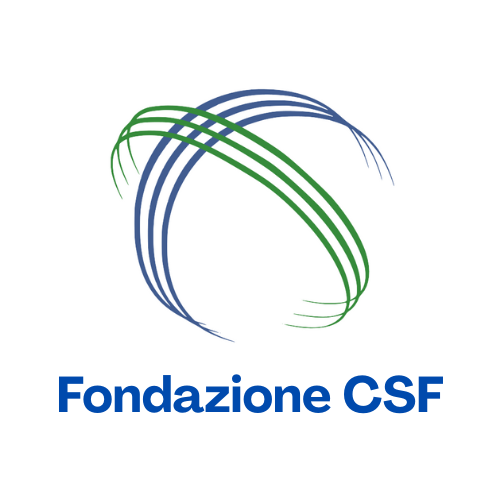Olimpia Fontana and Simone Vannuccini / 20 September 2024
Commentary no. 305
The long-awaited report “The Future of European Competitiveness”, authored by Mario Draghi, is at the same time an extensive collection of stylised facts about the position of the European Union (EU) in the global landscape, a curated repository of policy tools and recommendations, and a vision statement on the future of the Union and the changes in governance needed to achieve it. Whether the report becomes the rulebook that will shape European policy-making in the next political cycle or remains just another quickly shelved academic exercise will soon become clear. In any case, the issues addressed in the report are crucial, and the debate that followed its publication shows that serious reflection on the soul of the EU is much needed.
In his speech presenting the report, Draghi urged EU Member States and institutions to act with “urgency and concreteness” to avoid what is otherwise predicted to be a “slow agony”. The global context makes it necessary to think competitiveness no longer in terms of individual countries, as during the Euro crisis, and internal devaluations, but as a challenge facing the EU as a whole compared to the United States and China. The loss of competitiveness stems partly from a slowdown in productivity in Europe that has structural causes.
In a context characterised by slow productivity growth, the urgency to advance the ecological transition, and geopolitical instability, the report provides needed guidance. First, accelerate scientific and technological innovations to close the innovation gap that has grown since the 1990s. Second, articulate a decarbonisation plan whereby the EU is able to produce the necessary clean tech on its own, echoing the ongoing debate on strategic autonomy and technological sovereignty. Third, after years of globalisation, the EU will need to develop its own “economic foreign policy” to reduce potentially dangerous dependencies and ensure its own security. The report identifies a widespread lack of coordination across multiple fronts, between Member States, financial instruments and European policies, which often leads to overlaps and inefficiencies. This also stems from the EU’s complex governance structure and slow and disaggregated policy-making process that prevents the EU from responding adequately to the challenges.
The central argument of the report is that, rather than reallocations within the existing budget, the EU needs, in essence, a fresh injection of investment, amounting to an additional €750-800 billion per year. This represents 4.4%-4.7% of EU GDP and reflects the existential nature of the challenges the EU faces, as well as the deep connection between policies and politics: given the very limited room for additional expenditures in national budgets, decisions on the Union’s own resources and the changes in its institutional set-up – including sovereignty cessions – needed to generate and govern them cannot be postponed much further.
The report provides a comprehensive analysis and proposes concrete solutions. It underscores the need to achieve scale and create European “Champions” by consolidating key players in different markets, such as telecommunications. These proposals appear as a list of industry desiderata, do not necessarily square with the approach of the Letta report on the Single Market, and have rightly faced some scepticism, given overwhelming evidence of welfare losses associated with private monopolisation of “infrastructure” markets. However, the document has the merit of clarifying the terms of the debate. In fact, the report places much emphasis on the need to balance the frictionless functioning of the market with government interventions while avoiding nationalistic “races” to support domestic economies at the expense of the European polity. One way out of this tension is to think about state aid in continental terms. According to the report, state aid should be gradually shifted from the national to the European level to enable the investments needed to strengthen European competitiveness and the decarbonisation process. An important suggested path forward is to leverage the existing tool of the Important Projects of Common European Interest (IPCEI).
Since 2014, the European Commission has been encouraging Member States to develop pan-European collaborative projects that promote common European interests. Therefore, the EU has enabled vertical industrial policies through the Treaty provisions on state aid (Art. 107 TFEU). State aid is allowed if, among other things, it helps to finance projects with strategic EU objectives and which are highly ambitious in terms of research and innovation. The IPCEIs have emerged as a viable tool for Member States to finance industrial policy projects aligned with European priorities. In microelectronics, for example, the IPCEIs have supported the creation of a set of tangible and intangible assets whose benefits will be shared on an open access basis, beyond the participating undertakings, and are expected to spur knowledge accumulation and strengthen the European microelectronic value chain. While the NextGenerationEU package (NGEU) has provided some funding for IPCEIs at the European level thanks to the Recovery and Resilient Facility, IPCEIs rely mainly on national funding and participation. In this context, some countries are yet unable to participate due to the lack not only of fiscal capacity, but also of bureaucratic expertise and of a suitable business environment.
The Draghi report strongly advocates for IPCEIs – the use of which is recommended in virtually all sectors covered in the document. In particular, it suggests “fast tracking” and extending IPCEIs beyond breakthrough technologies, through a new instrument called “competitiveness IPCEI”, and making EU funds available for these. Pursuing the trajectory of a “Europeanisation” of IPCEIs is something we also proposed recently as a viable strategy to institutionalise industrial policy as a permanent instrument at the EU level. The EU should continue – based on the NGEU model – to issue common debt instruments to finance joint investment projects. As Draghi explained in his press conference, a common safe asset is not a goal in itself, but it is functional (and vital) in addressing existential challenges.
The report is an impressive exercise in collecting and proposing instruments for technology, competition and industrial policy (part B of the report offers analysis and recommendations for technology and sectors, from AI to energy, automotive, and defence, among others). However, its importance is primarily political, as it provides a technical foundation for the political guidelines of the new Commission and strongly underlines the two key and complementary priorities for the EU: spending better and spending more. The need for additional resources for investment is not just a matter of reducing the aforementioned productivity and innovation gaps; it is a matter of survival of the Old Continent as we know it. Draghi framed the challenge as a trilemma: “without action, we will have to either compromise our welfare, our environment, or our freedom”. Resolving the tensions between a more “interventionist” EU and avoiding transforming the Union into a sum of more assertive and inward-looking nations will be the task for the years to come. The report made clear that postponing the issue further reduces our capability, as Europeans, to shape our own destiny.
*Olimpia Fontana is Mario Albertini Fellow at the Centro Studi sul Federalismo and Research Fellow at Università Cattolica del Sacro Cuore; Simone Vannuccini is Professor of Economics of Artificial Intelligence and Innovation at Université Côte d'Azur, Nice (France)

 En
En  It
It 



